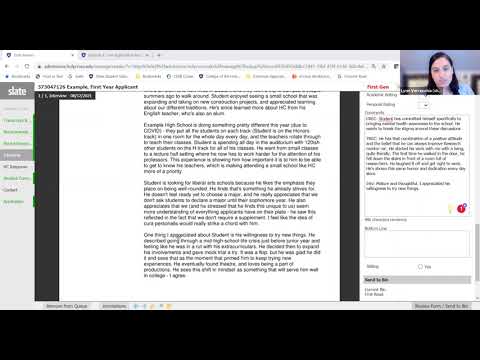So aside from public colleges subject to some sort of specific policy on this, colleges are largely free to do whatever they like with your transcript when using it as part of assessing your academic qualifications. This could involve calculating a GPA, but not necessarily–various colleges reportedly use an internal academic rating system which does not take the form of a GPA.
Someone else linked this once here, and I have in turn suggested it to many other people, because I think it is really helpful to get a better sense of what this really looks like internally:
This is Holy Cross showing how they use Slate, a common software package, to process an application. The first part shows how they use the School Report to help them process a transcript.
At around 4:23, they pop up a transcript, and next to it is what they call a reader sheet. One of the interesting things that happens as this reader fills out the sheet is they are normally marking just the number of As or Bs (so no -/+), but then with a C they note it is a C+!
They also go through the school profile, testing, recommendations, interviews, and so on. All along, you can see on the reader sheet on the right they have drop downs for an Academic Rating and Personal Rating. Somewhat frustratingly, they never actually use those on the video, but presumably they do in the real process. Eventually around 44:27 they show the summary report that goes to the Committee, and you can see how it carried over the reader sheet (including the C+!). The Academic Rating and Personal Rating are still left blank.
OK, so what to take from all this? Well, certain basic things. They can see your whole transcript. They can evaluate it as they see fit. They do that in context, using things like school reports and school profiles and so on. They also consider testing, recommendations, and so on. And then they come up with some sort of Academic Rating. And while the school-reported GPA was on the reader sheet and committee report, in the greater scheme, it didn’t seem like an overwhelmingly dominant part of the analysis.
This is just one college, but I think it is really helpful to know all this can be going on behind the scenes. Lots of kids I see online spend a lot of time worrying about exactly how their school calculates GPAs, or about how their GPA compares to others, but I think for the most part, those concerns are misplaced. It is really their whole transcript that matters (for good or ill), and there is no knowing exactly what a reader or committee is going to do with anything in particular on your transcript.
As a final note, I know that at least Dartmouth has been using AI-type tools to help them generate at least first-look academic ratings. I strongly suspect they are already not alone, and that this is going to become a very common practice. These tools can potentially combine even more information together when forming academic ratings, and do it so quickly it can save a lot of reader time (basically the time spent doing that on this video). And that in fact is what Dartmouth’s Dean of Admissions implied it was doing for them.
